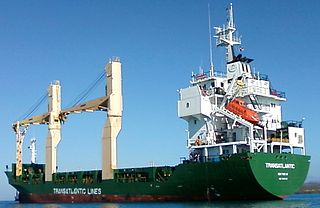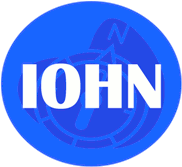
A floating production storage and offloading (FPSO) unit is a floating vessel used by the offshore oil and gas industry for the production and processing of hydrocarbons, and for the storage of oil. An FPSO vessel is designed to receive hydrocarbons produced by itself or from nearby platforms or subsea template, process them, and store oil until it can be offloaded onto a tanker or, less frequently, transported through a pipeline. FPSOs are preferred in frontier offshore regions as they are easy to install, and do not require a local pipeline infrastructure to export oil. FPSOs can be a conversion of an oil tanker or can be a vessel built specially for the application. A vessel used only to store oil is referred to as a floating storage and offloading (FSO) vessel.

Byford Dolphin was a semi-submersible, column-stabilised drilling rig operated by Dolphin Drilling, a Fred Olsen Energy subsidiary. It drilled seasonally for various companies in the United Kingdom, Danish, and Norwegian sectors of the North Sea. It was registered in Hamilton, Bermuda.

The Germanischer Lloyd SE was a classification society based in the city of Hamburg, Germany. It ceased to exist as an independent entity in September 2013 as a result of its merger with Norway's DNV to become DNV GL.
Essar Shipping Ltd., now Essar Shipping Ports & Logistics Limited, is an Indian shipping corporation for the global energy business. The company is a part of Essar Group. It was started in 1945 and incorporated in 2010. The company is listed in Bombay Stock Exchange BSE: 500630. The company headquarters is located in Mumbai.

Belokamenka was a VLCC, latterly used as an FSO vessel, located off Singapore, and prior to 2015, at Kola Bay near Murmansk. Belokamenka was scrapped in April 2019.
SCF Sakhalin is a Russian icebreaking platform supply and standby vessel owned by SCF Sakhalin Vessels Limited, a subsidiary of Sovcomflot. The ship was built by Aker Finnyards Helsinki shipyard in Finland in 2005 as FESCO Sakhalin for Far East Shipping Company (FESCO), but was purchased by Sovcomflot and renamed in 2010. Since the beginning it has been in long-term charter for Exxon Neftegas Ltd. and used to supply oil platforms in the Sakhalin-I project.

MV TransAtlantic is a U.S.-flagged container ship owned and operated by TransAtlantic Lines LLC. The 100-metre (330 ft) long ship was built at Wuhu Shipyard in Wuhu, China in 1997 as Steamers Future. Originally owned by Singapore's Keppel Corporation, she has had three owners, been registered under three flags, and been renamed ten times.
Oshima Shipbuilding Co., Ltd. is a privately held Japanese shipbuilding company. The company was founded on February 7, 1973, and began operations in June 1974. It is a joint venture between Sumitomo Corporation, Sumitomo Heavy Industries, and the Daizo Corporation.

The history of the oil tanker is part of the evolution of the technology of oil transportation alongside the oil industry.

MV Manifa is an oil tanker formally owned and operated by Vela International Marine. With a length overall of 330 m (1,080 ft) and a capacity of 2.2 million barrels (350,000 m3) of crude oil, she is classified as a very large crude carrier or VLCC. Vela is based in the United Arab Emirates and is a subsidiary of the Saudi Arabian state oil company Saudi Aramco. Sirius Star is one of Vela's 24 tankers, of which 19 are VLCCs. Since her launch, the ship has been registered in Monrovia under the Liberian flag of convenience.

Integrated Operations in the High North is a unique collaboration project that during a four-year period starting May 2008 is working on designing, implementing and testing a Digital Platform for what in the Upstream Oil and Gas Industry is called the next or second generation of Integrated Operations. The work on the Digital platform is focussed on capture, transfer and integration of Real-time data from the remote production installations to the decision makers. A risk evaluation across the whole chain is also included. The platform is based on open standards and enables a higher degree of interoperability. Requirements for the digital platform come from use cases defined within the Drilling and Completion, Reservoir and Production and Operations and Maintenance domains. The platform will subsequently be demonstrated through pilots within these three domains.

The FPSO Noble Seillean was a dynamically positioned floating oil production, storage and offloading vessel.
Roncador oil field is a large oil and gas field located in the Campos Basin, 125 km (78 mi) off the coast of Brazil, northeast from Rio de Janeiro. It covers a 111 km2 (43 sq mi) area and reaches depths between 1,500 and 1,900 metres.
Toisa Pisces is a Liberia-flagged well test and servicing vessel owned and operated by Sealion Shipping Ltd. She is classified by Det Norske Veritas as an oil production and storage unit.
The Yuri Korchagin field is an offshore oil field in the Russian sector of the North Caspian Sea. The field is located 180 kilometres (110 mi) from Astrakhan and 240 kilometres (150 mi) from Makhachkala at a sea depth of 11–13 metres (36–43 ft). The field is owned and operated by Lukoil–Nizhnevolzhskneft, a subsidiary of Lukoil. The contractor for drilling operations is a Moscow-based company BKE Shelf. The field is named after the former secretary of the company's board of directors.
M/T Irene SL is a Greek-owned and -operated VLCC or supertanker. It was pirated presumably by Somali pirates on February 9, 2011 approximately 350 miles Southeast of Muscat, Oman in the Arabian Sea.

DNV is an international accredited registrar and classification society headquartered in Høvik, Norway. The company currently has about 12,000 employees and 350 offices operating in more than 100 countries, and provides services for several industries including maritime, oil & gas, renewable energy, electrification, food & beverage and healthcare. DNV GL was created in 2013 as a result of a merger between two leading organizations in the field — Det Norske Veritas (Norway) and Germanischer Lloyd (Germany). In 2021, DNV GL changed its name to DNV, while retaining its post-merger structure.
Integrated Software Dependent Systems (ISDS) is an offshore standard (DNV-OS-D203) and recommended practice guideline (DNV-RP-D201) covering systems and software verifications and classification of any integrated system that utilizes extensive software control. The ISDS Recommended Practice (DNV-RP-D201) was launched in 2008 by Det Norske Veritas (DNV), the Norwegian classification society. DNV Offshore Standard OS-D203 launched in April 2010.

Scarabeo 9 is a Frigstad D90-type ultra deepwater 6th generation semi-submersible drilling rig. It is owned and operated by Saipem. It was named by Anna Tatka, the wife of Pietro Franco Tali, CEO of Saipem. The vessel is registered in Nassau, Bahamas.

Scarabeo 8 is an ultra deepwater 6th generation semi-submersible drilling rig. It is owned and operated by Saipem. The vessel is registered in Nassau, Bahamas.











